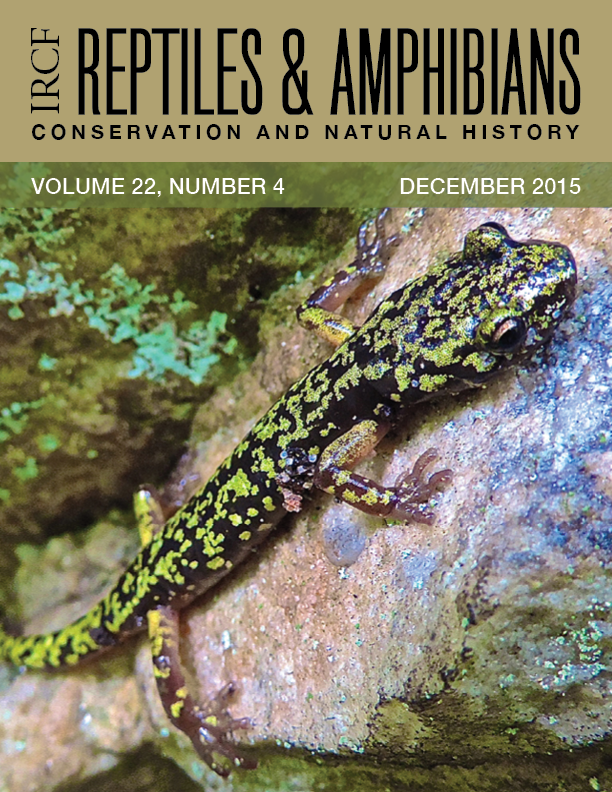Combining Citizen Science with Traditional Biotic Surveys to Enhance Knowledge Regarding the Natural History of Secretive Species
Notes on the Geographic Distribution and Status of the Green Salamander (Aneides aeneus) in the Cumberland Mountains of Virginia, USA
DOI:
https://doi.org/10.17161/randa.v22i4.14066Keywords:
Aneides aeneus, Green Salamander, Conservation, Biogeography, Virginia, Appalachian Mountains, Distribution, Citizen science, Amphibian, Cumberland MountainsAbstract
The Green Salamander (Aneides aeneus) is a secretive, arboreal cliff specialist distributed discontinuously across the southern and central Appalachian Mountains, USA. While intensively studied in some parts of its range in the Appalachian Plateau and Blue Ridge Provinces, the distribution of A. aeneus is still poorly understood, particularly in the Cumberland Mountains physiographic province of the Appalachian region. This data deficiency is partly the result of a lack of formal historic surveys across this region, coupled with a high amount of privately owned land that is inaccessible to traditional biotic surveys. We used a combination of citizen science efforts and traditional field surveys to investigate the distribution and status of A. aeneus across the Cumberland Mountains of southwestern Virginia, USA. Local landowners and outdoor recreation enthusiasts reported a relatively high rate of encounters with A. aeneus, verifying the species’ persistence at four historic localities and leading to the discovery of 36 previously unknown populations. Although we are cautious about making inferences about the true conservation status of A. aeneus across this region given the scarcity of current data, these findings suggest that the distribution of A. aeneus in Virginia has been vastly underestimated and that expanded monitoring programs are needed to further ascertain this species’ status. More broadly, our results illustrate the utility of coupling public initiatives with more traditional field surveys to expand the biogeographic knowledge of secretive, difficult-to-study amphibian species.
Downloads
Published
Issue
Section
License
Copyright is held by the authors. Articles in R&A are made available under a Creative Commons Attribution-NonCommercial 4.0 International license.

